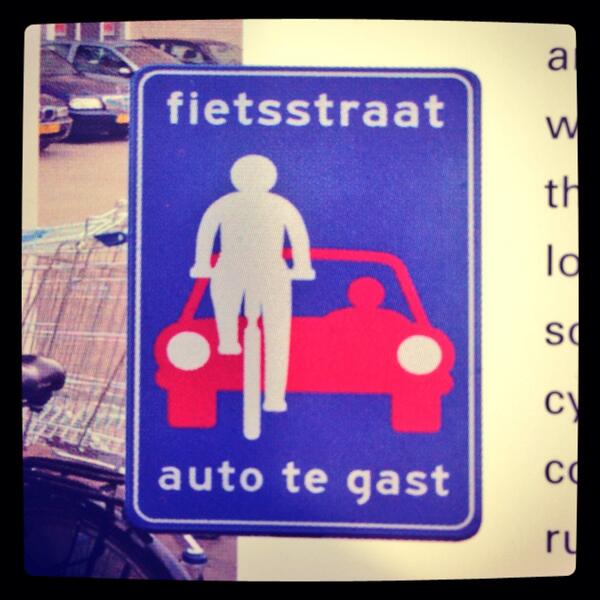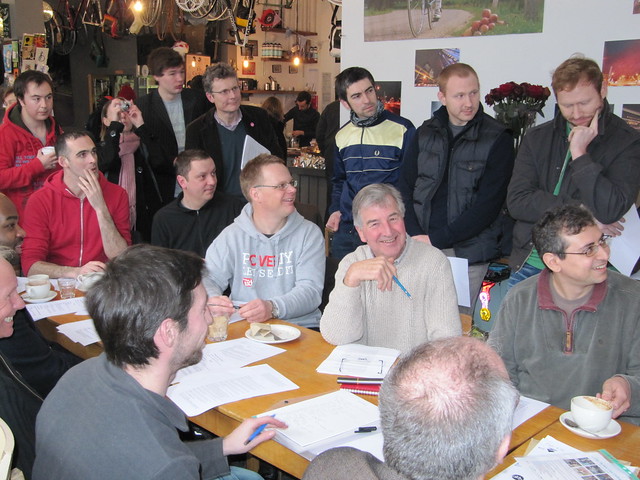There was an interesting comment nestling in a report of an inquest into a cyclist’s death, from road.cc yesterday –
Police Constable Ian Clark said it was “likely” the cyclist had been wearing earphones at the time of the collision – the implication being he may not have heard the vehicle behind him – adding: “I think a significant majority of motorists would have done as Mr Coggon [the driver] did,” he said.
It seems the cyclist was moving out to turn right, and was hit by a car that happened to be overtaking him. Obviously a tragic incident. Given that there are sparse details about what actually happened, it’s hard to say whether the verdict of accidental death is a reasonable one.
My concern here, however, is specifically the highlighted statement from Constable Clark. You can see that Mr Coggon is being defended in terms of how ‘the majority of motorists’ would behave. Put simply, Constable Clark is suggesting that Mr Coggon wasn’t doing anything wrong – couldn’t have been doing anything wrong – because he was driving like everyone else. The standards of driving set not by what is objectively safe, or proper, but by how ‘the majority of motorists’ would behave.
Is that appropriate?
In my experience, ‘the majority of motorists’ do not pass me with anything like the recommended passing distance covered in the Highway Code – Rule 163. ‘The majority of motorists’ do not overtake me in a way that gives me the maximum amount of safety while I am cycling.
Equally, the ‘majority of motorists’ seem quite happy to overtake me around junctions, in plain contravention of Rule 167 –
DO NOT overtake where you might come into conflict with other road users. For example… approaching or at a road junction on either side of the road
This happens to me each and every day, and I’m sure (anecdotally, of course) that any person who rides a bike can report that it happens to them too, with remarkable frequency.
Now of course we don’t know the extent to which Mr Coggon flouted these rules of the Highway Code. He may well have been driving perfectly, and the cyclist was entirely to blame, swerving out randomly into the middle of the road.
The issue here, rather, is a police constable appearing to believe that the way ‘the majority of motorists’ behave is a reasonable and sound guide to what constitutes good driving, when in reality a ‘significant majority of motorists’ will quite happily overtake a cyclist, at close proximity, through junctions. The way the majority behaves is obviously not a sound guide to good driving.
The unspoken assumption behind a statement like this is that everyone behind the wheel is intrinsically well-behaved and reasonable; an assumption quite naturally shared by the general public, who make most day-to-day trips in their motor vehicles. If an individual crashes their car, news reports will describe how a ‘car crashed’ (even, bizarrely, that a ‘car lost control’), as if something unspecified went wrong with it, rather than a human being making an error. Likewise, if we get caught breaking a law, then it is the law that is wrong, and sneaky, and not our behaviour, which is obviously reasonable, because everyone else is behaving the same way. See how speed cameras are described as ‘traps’ that unfairly catch out ‘otherwise law-abiding’ motorists, snaring them in a moment of weakness. ‘Ordinary’ drivers are good; circumstances, or the government, conspire to make them momentarily ‘bad’.
This logic is reflected in this remarkable statement from Ken Clarke, the former Justice Secretary, made in the House of Commons –
In the case of ordinary dangerous driving without any serious consequences, although I deplore all dangerous driving we cannot start imposing heavy prison sentences on everybody who might otherwise be a blameless citizen and then behaves in an absolutely reprehensible way when driving his car.
In the first place, we have the description of dangerous driving as ‘ordinary’ merely because the person behind the wheel had the good fortune – or blind luck – not to maim or seriously injure someone. A ‘blameless citizen’ who blasts through a zebra crossing at speed, while someone is on it, would only be engaging in ‘ordinary’ dangerous driving, not the kind with ‘serious consequences’.
In the second place, we can see that behaving ‘in an absolutely reprehensible way’ in a car is a completely different kind of reprehensible behaviour than the kind which might pose an identical – or even lesser – amount of danger, but doesn’t involve a car. It’s almost as if we expect people to behave badly in cars, that there’s something about a car that can turn ‘blameless citizens’ into ‘reprehensible drivers’, and we should make an accommodation for that kind of behaviour. Indeed, there appear to be so many of these ‘blameless citizens’ behaving reprehensibly in cars that we couldn’t possibly lock them all up!
I suppose it is natural that in a motorised society ‘reasonable behaviour’ is defined by how the majority behaves, even if the consequences of that majority behaviour could turn out to be appalling for who happen to be travelling by minority modes of transport. A jury apparently considered that a lorry driver who failed to spot Mary Bowers, clearly visible in front of him while stationary for at least ten seconds, could not possibly have been behaving dangerously, despite a catalogue of other offences. These kinds of extraordinary lapses are presumably not quite so extraordinary for these juries. A strange form of moral majority, that I hope will begin to dissolve, and soon.



























































